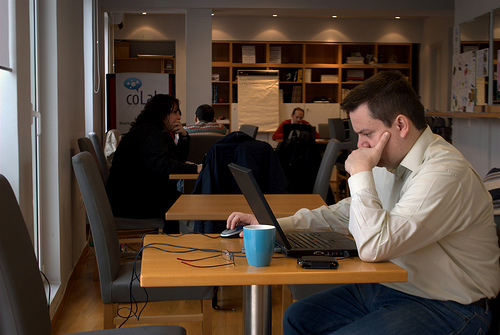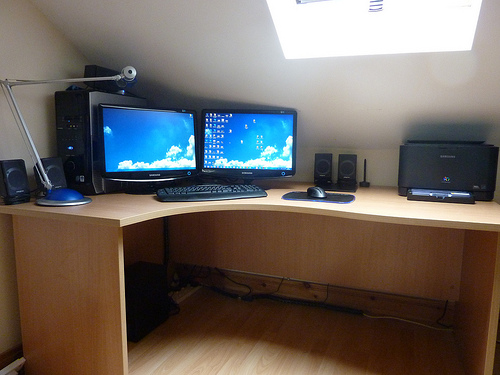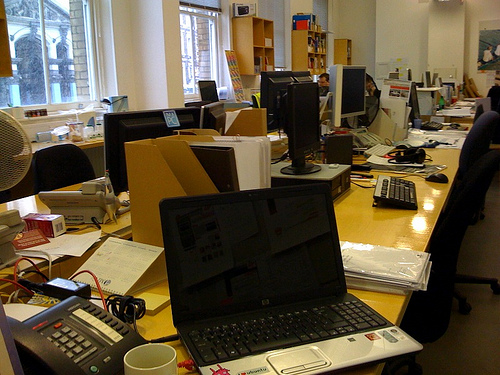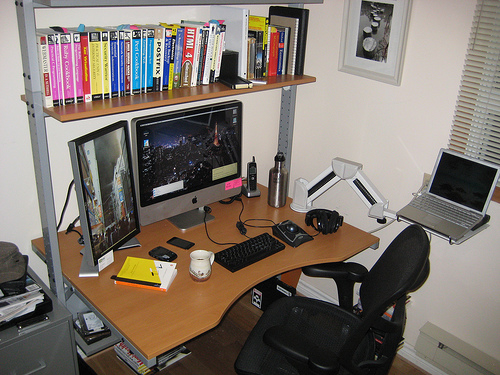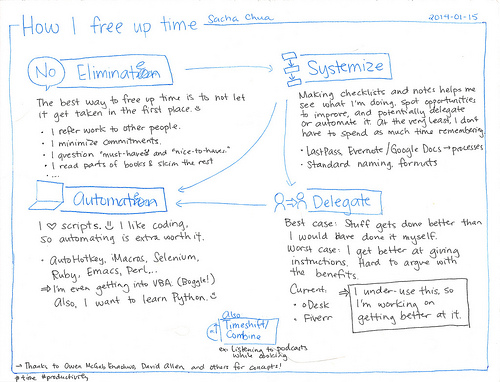You can do entire types of work remotely. More types than you might suspect.
This is the first of a post series, talking about which jobs/job types are best (and worst) suited for remote work. I’m writing it for two explicit audiences:
- Those who’d like ammo in case someone asks, “Well if telecommuting’s so great, how come only programmers do it?”
- Those who hear about Remote Work and think, “There’s no way you could do X Job remotely.”
If you think remote work is only good for contracted programmers, this post should prove enlightening. I’ve met many different people who work remotely, in a variety of roles…all the way up to CEO!
Maybe I’ll address the “remote CEO” question later. For now though, let’s dig into our definitions. In order to determine if a work type is indeed suitable for Remote Work, we’ll need criteria. Factors which, if they all add up, mean the job is not location-based. Here are those factors.
The Criteria for Remote Work Suitability
After some research and pondering, I devised these criteria for our use. They cover critical work functions, interactions, and goals. They are also broad enough that they apply to most work types without special circumstances (e.g., medical, rural industry).
- Primary Role—Where is it most effective?
- Job Location vs. Customer Location
- Do the daily duties require physical interaction?
- Which communication methods are commonly used?
- What is the ideal communication method for this job?
- What output does the job generate, and where does it go?
I’ve dissected 6 common work types using these criteria, and found all of them are suitable for remote work. In fact, none require a physical office at all!
I hope at least one of these surprises you. I’m using standard industry names for easy understanding.

Work Type 1: Web Development
- PRIMARY ROLE — Wherever the developer is most productive.
- LOCATION — Customer location can be “anywhere.” Job location is therefore location-independent.
- DUTIES REQUIRE PHYSICAL INTERACTION — No. Email, calls, and chat work fine. Especially when dealing with code.
- COMMUNICATION METHODS — Email, GitHub, chat, etc.
- IDEAL COMMUNICATION — This depends on the client for whom the developer works. Any of the methods from #4 may then work.
- OUTPUT & WHERE — Code for apps & websites. This is posted to a server, tested, and released.
From what we can see. nothing about this role requires presence in an office. No surprise that this is one of the largest telecommuting-friendly work roles today.
Work Type 2: Management
- PRIMARY ROLE — Directing the workloads of others. You can do it in-office or through other methods, depending on scale & business standards.
- LOCATION — “Customers” are split between actual business customers & employees. Either or both can be local or remote.
- DUTIES REQUIRE PHYSICAL INTERACTION — Requires interaction, yes. Physical interaction? Again, depends on scale & business structure. But no, physical interaction is not required.
- COMMUNICATION METHODS — Phone, email, collaborative editing, yelling across the office, text…all sorts. In fact, some communications were arguably invented for Management to talk with you more!
- IDEAL COMMUNICATION — For management, ideal communication is trackable, fast/real-time, and clear. Email & phone win out.
- OUTPUT & WHERE — A manager’s output is measured in employee productivity & customer satisfaction.
Should Management stick to the office? They can. Do they have to? No.
Work Type 3: Creative Work
- PRIMARY ROLE — The same as a developer…wherever they are most productive.
- LOCATION — Customers are usually an employer or client. Job can be wherever they are, or wherever the creative is.
- DUTIES REQUIRE PHYSICAL INTERACTION — Daily duties involve focused work: writing copy, designing graphics, etc. They require focus…the opposite of interaction!
- COMMUNICATION METHODS — See Management’s #4.
- IDEAL COMMUNICATION — I asked a designer friend of mine how he prefers to communicate. He prefers two methods:
- Email (for as much detail as needed), and
- Video calls (for getting a good sense of what someone wants).
- OUTPUT & WHERE — Output is creative content. This normally goes into a website, ad, or marketing campaign.
Like web developers, nothing in creative work requires an office. In fact, many find offices stifling. Too much noise, not enough focus time.
Work Type 4: Sales
- PRIMARY ROLE — Salespeople sell. Thus they are most effective where the customer is most receptive. That could be in a store, on a website, or over a phone.
- LOCATION — See #1.
- DUTIES REQUIRE PHYSICAL INTERACTION — Some sales processes do require personal interaction…negotiating deals, for instance. But this is changing as more people shop online.
- COMMUNICATION METHODS — Salespeople rely on techniques & rapport. In the past they built both with speaking & learning about customer needs. Such skills are still useful…and even better, you can use many of the same techniques online.
- IDEAL COMMUNICATION — So much business occurs online that I’d say the ideal sales communication method is now the written word. That means email, webpages, chat, texting.
- OUTPUT & WHERE — You can measure sales output in customer purchases, reviews, repeat sales, & so on. Doing sales remotely actually makes all of these easier to track.
Sales is very audience-specific. Depending on yours, your salespeople could do very well telecommuting.
Work Type 5: Information Technology/IT
- PRIMARY ROLE — IT is a broad term, but I’ll go with a general goal of “maintaining IT systems within the business.” This is most effective from a place where the IT professional can access said systems efficiently.
- LOCATION — Customer is the employer or client (they’re the ones paying for the technology!). Location could be where the system is, if remote access is not possible. Bust that’s becoming a tiny minority. Remote access is commonplace.
- DUTIES REQUIRE PHYSICAL INTERACTION — Duties require interaction with the system more frequently than with people. Some IT pros prefer not interacting with people at all!
- COMMUNICATION METHODS — Like web developers, IT pros use almost every communication method out there.
- IDEAL COMMUNICATION — Based off my own IT friends, I’d say online chat has become the ideal method. Slack, Skype/Teams, etc. It’s real-time, easy to follow, and keeps logs.
- OUTPUT & WHERE — Output is a fully-functional IT system. Done right, you’re just doing regular checks & maintenance in between upgrades.
We’ve all breathed a sigh of relief when “the IT guys” show up to fix our problem. Nowadays though, they don’t have to physically go anywhere.
Work Type 6: Customer Service
- PRIMARY ROLE — Since Customer Service must address customer issues, they are most effective when dealing with the customers where THEY (the customers) want to be.
- LOCATION — Customers can be anywhere. Customer Service jobs must at least have the capability to help them anywhere.
- DUTIES REQUIRE PHYSICAL INTERACTION — A definite no. Case in point: Amazon’s Help Center. These CS reps are worldwide, and yet they do a pretty good job of addressing Amazon customers’ issues.
- COMMUNICATION METHODS – Customer Service is traditionally done through phone. However, I can’t recall the last time I called one. Instead, I go to a company’s website, and either send them an email, or fire up a chat window.
- IDEAL COMMUNICATION — Like IT, chat shines here. Chat works on any device, real-time, with no yelling or trying to figure out what the customer mumbled.
- OUTPUT & WHERE — Output is measured in number of satisfied issues & post-CS survey results. All made & recorded online.
Remote Work has given Customer Service a boost. A job search on Indeed showed me that the majority of CS jobs listed said the job was remote.
6 Major Work Types are all Remote Work-friendly. Is Yours?
These are just six types of work. You could also illustrate good Remote Work choices by industry (I’ll do that in a future post). Regardless, we can clearly see that major roles are easily “Remote-Enabled.”
Next time I’ll list some work types NOT suited for Remote Work. At least…not yet.
Is your job among the types listed above? If so, are you working remotely? Why/Why not? Please comment or email me your thoughts.









